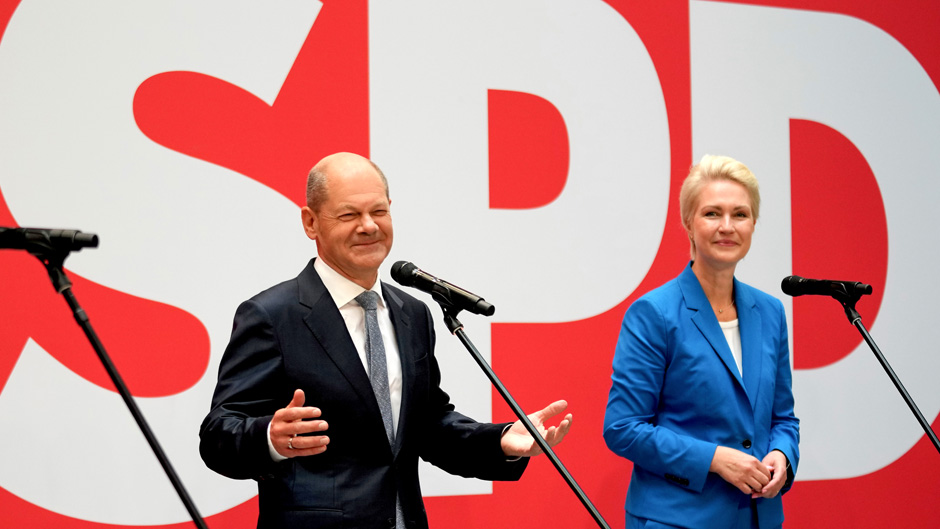On Sept. 26, Germans went to the polls for an election unprecedented in recent history. For the first time since the founding of the Federal Republic, an incumbent chancellor was not campaigning for reelection. Current Chancellor Angela Merkel decided to step down after serving 16 years in office.
Merkel left a wide-open field of parties with competing visions for Germany.
Her Christian Democratic Party (CDU/CSU) selected Armin Laschet as its lead candidate to succeed her. While Laschet promised stability, he undermined his own chances this summer when he was caught on camera laughing during a speech that honored victims of a terrible flood. Merkel’s vice chancellor and finance minister, Olaf Scholz, from the Social Democratic Party (SPD), also endeavored to portray himself as her logical and competent successor.
The Green Party, led by Annalena Baerbock, called for a new, more climate-friendly direction in German politics while the libertarian Free Democratic Party (FDP), led by Christian Lindner, pledged to modernize the Federal Republic’s digital infrastructure and promote innovation. In addition, the far-left party Die Linke promoted better pay for care workers and a higher minimum wage. The far-right Alternative for Germany (AfD, under observation by the Germany Office of Constitutional Protection for antidemocratic tendencies) called for a return to a "normal," ethnically homogeneous, patriarchal Germany. Dozens of other much smaller parties appealed to voters with a host of other plans.
The results of the election represent a sea change in German politics. Merkel’s Christian Democratic party achieved its worst-ever showing, earning only 24 percent of the vote. Vice Chancellor Scholz was able to raise the Social Democratic Party’s vote share to 26 percent. Together, however, these two people’s parties—that jointly earned more than 70 percent of the vote between the 1950s and 1980s—obtained support from only half the population.
Instead, the Greens experienced their best result ever, capturing 15 percent of the vote and winning seats in urban areas previously held by the people’s parties. The Free Democrats increased their vote share to 11 percent. Both the Greens and the FDP performed even better among younger, first-time voters—together they won half the votes. Die Linke received a paltry 4 percent of the vote, down from 9 percent in 2017, and the AfD also dropped 2 percent to 10 percent. The remaining 9 percent of the vote divided among the multiple other parties not passing the 5 percent threshold for parliamentary representation.
The fragmented election results will make coalition formation quite difficult. The CDU/CSU and SPD have pledged not to continue their current government and no party will coalesce with the extremist AfD. As a result, only two possible coalitions remain, each requiring three parties. A “traffic light” coalition would involve the Greens, FDP (signature color yellow), and the SPD (colored red), while a “Jamaica” coalition would share the colors indicative of this country’s flag: Green, FDP (yellow), and CDU/CSU (black).
The Greens and FDPs are currently in negotiations to see if they can find common ground before approaching the larger parties to settle on a final coalition partner. Green/FDP negotiations will require considerable compromise; while both parties favor aggressive steps to combat climate change, they disagree on methods. The Greens campaigned on a platform of large-scale public investment in climate policy whereas the FDP has called for tax cuts to stimulate climate-friendly economic innovation.
If they can agree on how to proceed together, their next step will be to approach the former people’s parties to obtain a majority. The traffic-light option is preferred by the German public, who by large margins favor SPD’s Scholz as chancellor over the CDU/CSU’s Laschet.
Louise K. Davidson-Schmich is a professor of political science at the University of Miami College of Arts and Sciences and the author of “Gender Quotas and Democratic Participation: Selecting Candidates for Elective Offices in Germany.”

